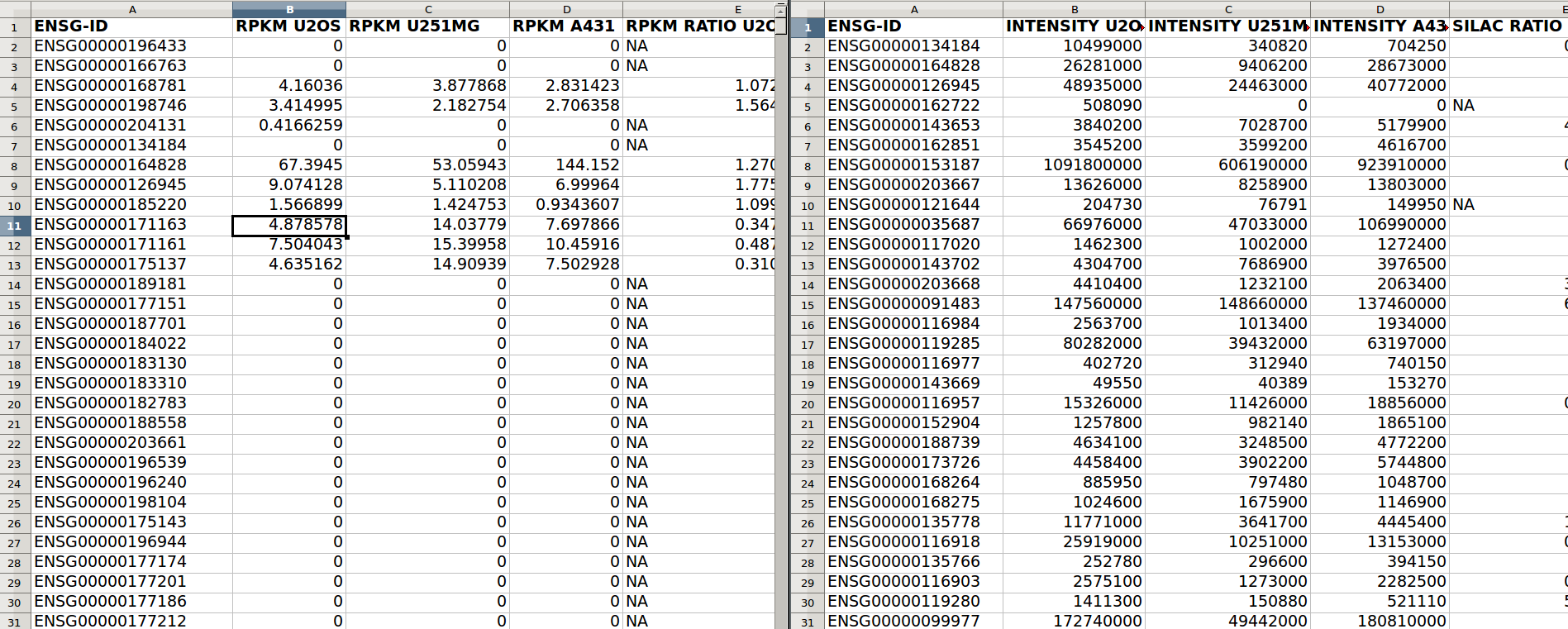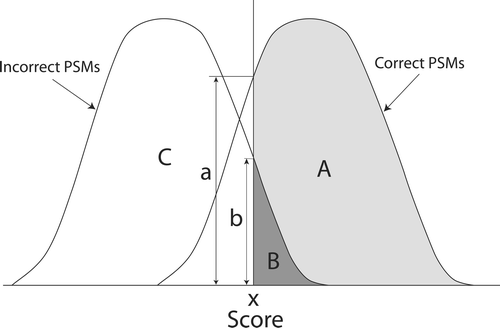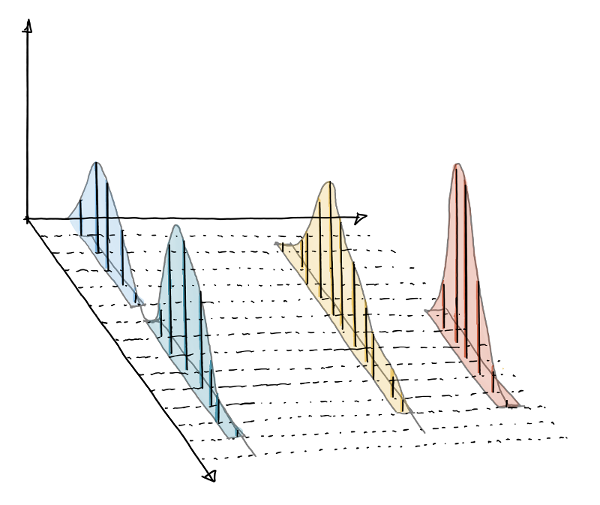class: center, middle, inverse, title-slide # Mass spectrometry and proteomics ## Using R/Bioconductor ### <a href="#laurent-gatto">Laurent Gatto</a> ### <a href="https://uclouvain-cbio.github.io/BSS2019/">BSS2019</a> - UCLouvain - 5 July 2019 --- class: middle name: cc-by These slides are available under a **creative common [CC-BY license](http://creativecommons.org/licenses/by/4.0/)**. You are free to share (copy and redistribute the material in any medium or format) and adapt (remix, transform, and build upon the material) for any purpose, even commercially <img height="20px" alt="CC-BY" src="./img/cc1.jpg" />. --- class: middle ## On the menu **Overall goal** (with [Lieven Clement](https://statomics.github.io/pages/about.html)): quanitative proteomics data analysis done right using Bioconductor tools and (some of) the best statistical methods. 1. Proteomics in Bioconductor 2. How does mass spectrometry-based proteomics work? 3. Quantitative proteomics 4. Introduction to *[MSnbase](https://bioconductor.org/packages/3.9/MSnbase)* --- class: middle center  ??? From a 2011 study that compared the expression profiles of 3 cell lines using RNA-Seq, MS-based proteomics and immunofluorescence (protein-specific antibodies). They observed an overall Spearman correlation of 0.63. **In what ways to these summaries differ?** Using a common gene-centric identifier, but - What do we have along the rows, what are our features? Transcripts on the left. Protein groups on the right. - How are these intensities produced? ## Take-home message 1 These data tables are less similar than they appear. --- class: middle, center ## 1. [Proteomics](http://bioconductor.org/packages/release/BiocViews.html#___Proteomics) and [mass spectrometry](http://bioconductor.org/packages/release/BiocViews.html#___MassSpectrometry) packages and [workflow](https://rawgit.com/lgatto/bioc-ms-prot/master/lab.html) in Bioconductor. --- class: middle, center ## 2. How does mass spectrometry work? ### (applies to proteomics and metabolomics) --- class: middle ### Overview  --- ### How does MS work? 1. Digestion of proteins into peptides - as will become clear later, the features we measure in shotgun (or bottom-up) *proteomics* are peptides, **not** proteins. -- 2. On-line liquid chromatography (LC-MS) -- 3. Mass spectrometry (MS) is a technology that **separates** charged molecules (ions, peptides) based on their mass to charge ratio (M/Z). --- ### Chromatography MS is generally coupled to chromatography (liquid LC, but can also be gas-based GC). The time an analytes takes to elute from the chromatography column is the **retention time**.  ??? - This is an acquisition. There can be one per sample (with muliple fractions), of samples can be combined/multiplexed and acquired together. --- class: middle An mass spectrometer is composed of three components: 1. The *source*, that ionises the molecules: examples are Matrix-assisted laser desorption/ionisation (MALDI) or electrospray ionisation (ESI). 2. The *analyser*, that separates the ions: Time of flight (TOF) or Orbitrap. 3. The *detector* that quantifies the ions. Ions typically go through that cylce at least twice (MS2, tandem MS, or MSMS). Before the second cycle, individual *precursor* ions a selected and broken into *fragment* ions. --- class: middle center  ??? Before MS: - Restriction with enzyme, typically trypsine. - Off-line fractionation. An mass spectrometer is composed of three components: 1. The *source*, that ionises the molecules: examples are Matrix-assisted laser desorption/ionisation (MALDI) or electrospray ionisation (ESI). 2. The *analyser*, that separates the ions: Time of flight (TOF) or Orbitrap. 3. The *detector* that quantifies the ions. Ions typically go through that cylce at least twice (MS2, tandem MS or MSMS). Before the second cycle, individual *precursor* ions a selected, broken into fragment ions. --- class: middle center  --- class: middle center  ??? Highlight - Semi-stochastic nature of MS - Data dependent acquisition (DDA) --- class: middle center .left-col-50[  ] .right-col-50[  ] ??? - Please keep this MS space and the semi-stochastic nature of MS acquisition in mind , as I will come back to it later. --- ### Identification: fragment ions  --- ### Identification: Peptide-spectrum matching (PSM) Matching **expected** and *observed* spectra: ``` > MSnbase::calculateFragments("SIGFEGDSIGR") mz ion type pos z seq 1 88.03931 b1 b 1 1 S 2 201.12337 b2 b 2 1 SI 3 258.14483 b3 b 3 1 SIG 4 405.21324 b4 b 4 1 SIGF 5 534.25583 b5 b 5 1 SIGFE 6 591.27729 b6 b 6 1 SIGFEG 7 706.30423 b7 b 7 1 SIGFEGD 8 793.33626 b8 b 8 1 SIGFEGDS 9 906.42032 b9 b 9 1 SIGFEGDSI 10 963.44178 b10 b 10 1 SIGFEGDSIG 11 175.11895 y1 y 1 1 R 12 232.14041 y2 y 2 1 GR 13 345.22447 y3 y 3 1 IGR 14 432.25650 y4 y 4 1 SIGR 15 547.28344 y5 y 5 1 DSIGR 16 604.30490 y6 y 6 1 GDSIGR [ reached getOption("max.print") -- omitted 16 rows ] ``` --- class: middle ### Identification: Peptide-spectrum matching (PSM) Matching *expected* and **observed** spectra:  ??? Performed by **search engines** such as Mascot, MSGF+, Andromeda, ... --- ### Identification: database  ??? ## [Human proteome](https://www.uniprot.org/help/human_proteome) In 2008, a draft of the complete human proteome was released from UniProtKB/Swiss-Prot: the approximately 20,000 putative human protein-coding genes were represented by one UniProtKB/Swiss-Prot entry, tagged with the keyword 'Complete proteome' and later linked to proteome identifier UP000005640. This UniProtKB/Swiss-Prot H. sapiens proteome (manually reviewed) can be considered as complete in the sense that it contains one representative (**canonical**) sequence for each currently known human gene. Close to 40% of these 20,000 entries contain manually annotated alternative isoforms representing over 22,000 additional sequences ## [What is the canonical sequence?](https://www.uniprot.org/help/canonical_and_isoforms) To reduce redundancy, the UniProtKB/Swiss-Prot policy is to describe all the protein products encoded by one gene in a given species in a single entry. We choose for each entry a canonical sequence based on at least one of the following criteria: 1. It is the most prevalent. 2. It is the most similar to orthologous sequences found in other species. 3. By virtue of its length or amino acid composition, it allows the clearest description of domains, isoforms, polymorphisms, post-translational modifications, etc. 4. In the absence of any information, we choose the longest sequence. ## Are all isoforms described in one UniProtKB/Swiss-Prot entry? Whenever possible, all the protein products encoded by one gene in a given species are described in a single UniProtKB/Swiss-Prot entry, including isoforms generated by alternative splicing, alternative promoter usage, and alternative translation initiation (*). However, some alternative splicing isoforms derived from the same gene share only a few exons, if any at all, the same for some 'trans-splicing' events. In these cases, the divergence is obviously too important to merge all protein sequences into a single entry and the isoforms have to be described in separate 'external' entries. ## UniProt [downloads](https://www.uniprot.org/downloads) --- class: middle ### Identification  From Käll *et al.* [Posterior Error Probabilities and False Discovery Rates: Two Sides of the Same Coin](https://pubs.acs.org/doi/abs/10.1021/pr700739d). ??? - (global) FDR = B/(A+B) - (local) fdr = PEP = b/(a+b) --- ### Identification: Protein inference - Keep only reliable peptides - From these peptides, infer proteins - If proteins can't be resolved due to shared peptides, merge them into **protein groups** of indistinguishable or non-differentiable proteins. --- class: middle  From [Qeli and Ahrens (2010)](http://www.ncbi.nlm.nih.gov/pubmed/20622826). --- class: middle, center ## 3. Quantitative proteomics --- class: middle | |Label-free |Labelled | |:---|:----------|:----------| |MS1 |XIC |SILAC, 15N | |MS2 |Counting |iTRAQ, TMT | .left-col-50[  ] .right-col-50[  ] --- class: middle center ### Label-free MS2: Spectral counting  From the [Pbase](https://bioconductor.org/packages/release/bioc/html/Pbase.html) package. ??? Comments of **spectral counting**: - easy, but *semi-quantitative* - **Note depth/coverage and compare to RNA-seq.** --- class: middle center ### Labelled MS2: Isobaric tagging  ??? Comments of **isobaric tagging**: - multiplexing, albeit limited - limited problem with missing values - easy to process (fewer parameters to set) --- class: middle center ### Label-free MS1: extracted ion chromatograms .left-col-50[  ] .right-col-50[  ] Credit: [Johannes Rainer](https://github.com/jotsetung/) ??? Comments on **label-free**: - Data processing - Independent runs, NAs --- class: middle center ### Labelled MS1: SILAC  Credit: Wikimedia Commons. ??? Comments of **isotope labelling**: - like red/green microarrays - can be extended to 3, but risk of overlap of light, medium and heavy peaks --- class: middle, center ## 4. The *[MSnbase](https://bioconductor.org/packages/3.9/MSnbase)* package <img src="https://raw.githubusercontent.com/Bioconductor/BiocStickers/master/MSnbase/MSnbase.png" alt="MSnbase" style="width: 150px; padding: 10px"/> --- class: middle ### Practical/demo - Files in mass spectrometry and proteomics - handling raw MS data using MSnExp objects - loading identification data - from raw to quantitative data as MSnSet objects - load spreadsheet to MSnSet - Quantitative proteomics data processing - filtering (independent filtering) - missing values - log transformation - normalisation - summarisation See the [lab](https://htmlpreview.github.io/?https://github.com/lgatto/bioc-ms-prot/blob/master/bss-lab.html) vignette. --- class: middle name: laurent-gatto .left-col-50[ <img src="./img/lgatto3b.png" width = "180px"/> ### Laurent Gatto <i class="fas fa-flask"></i> [Computational Biology Group](https://lgatto.github.io/cbio-lab/)<br /> <i class="fas fa-map-marker-alt"></i> de Duve Institute, UCLouvain<br /> <i class="fas fa-envelope"></i> laurent.gatto@uclouvain.be<br /> <i class="fas fa-home"></i> https://lgatto.github.io<br /> <i class="fab fa-twitter"></i> [@lgatto](https://twitter.com/lgatt0/)<br /> <i class="fab fa-github"></i> [lgatto](https://github.com/lgatto/)<br /> <img width="20px" align="top" alt="orcid" src="./img/orcid_64x64.png" /> [0000-0002-1520-2268](https://orcid.org/0000-0002-1520-2268)<br /> <img width="20px" align="top" alt="Impact story" src="./img/keybase.png"/> [lgatto](https://keybase.io/lgatto)<br /> <img width="20px" align="top" alt="Google scholar" src="./img/gscholar.png"/> [Google scholar](https://scholar.google.co.uk/citations?user=k5DrB74AAAAJ&hl=en)<br /> <img width="20px" align="top" alt="Impact story" src="./img/impactstory-logo.png"/> [Impact story](https://profiles.impactstory.org/u/0000-0002-1520-2268)<br /> <i class="fas fa-pencil-alt"></i> [dissem.in](https://dissem.in/r/6231/laurent-gatto)<br /> <!-- <i class="fab fa-linkedin"></i> https://www.linkedin.com/in/lgatto/<br /> --> ] .rigth-col-50[ ## Thank you for your attention ]